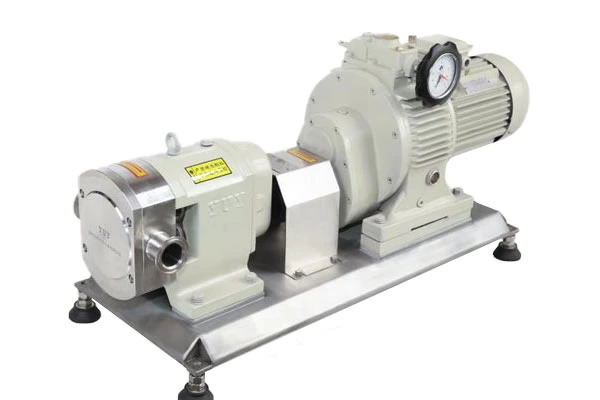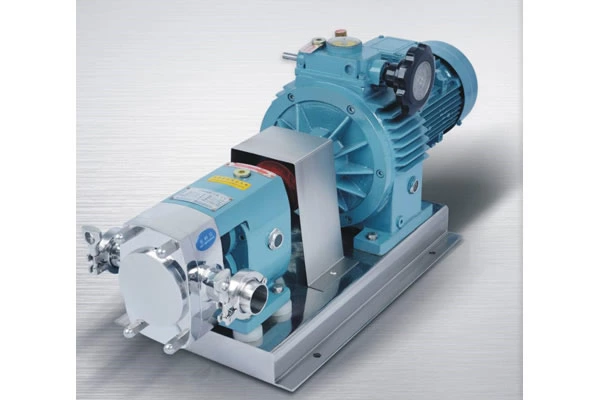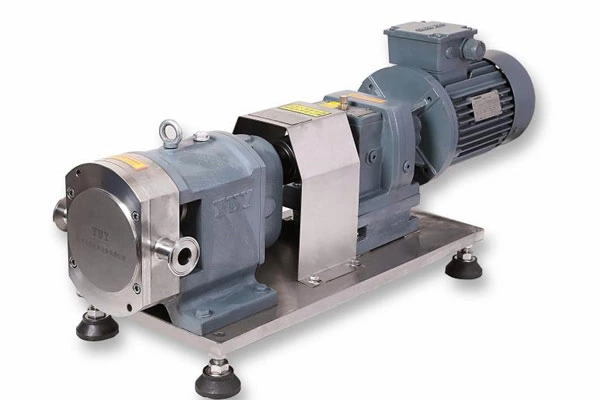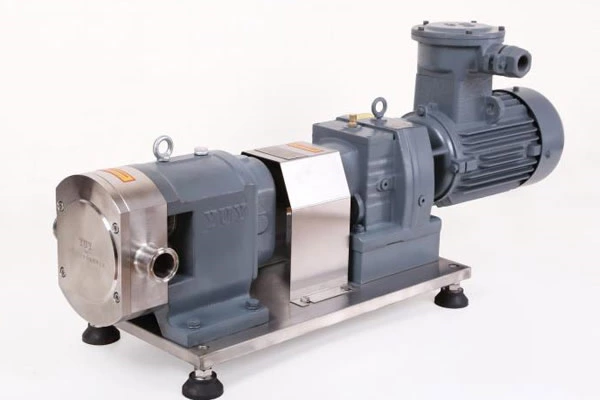Classification Of Sanitary Rotary Vane Pumps Based On Working Principle
Sanitary Rotary Lobe Pump uses the velocity of water to drive the pump impeller to pump water to the river bank. This pump can pump water when thrown into the river, but it must be in a place with fast water flow or a drop. Self-priming means that the pump can automatically expel the gas in the suction pipe without filling the suction pipe with liquid (but there must be enough liquid in the pump body) when starting the pump, and then enter normal operation. The pump must be filled with enough liquid when it is first started. When it is started later, the liquid remaining in the pump body will ensure that the pump can start again.
The self-priming time of the sanitary rotary vane pump refers to the shortest time required from the start of the pump to the pressure stabilization when the pump is pumping clean liquid at room temperature and the installation height is the allowable suction vacuum () minus 0.5, that is, the time required for the pump to exhaust the air in the suction pipe. For centrifugal self-priming pumps, the length of the suction pipe between the suction surface and the pump inlet should be less than the pump installation height plus 20D (suction pipe hole diameter); for vortex self-priming pumps, the length of the suction pipe between the suction surface and the pump inlet should be less than the pump installation height plus
Sanitary rotary vane pumps can be divided into two types: internal mixing and external mixing based on the working principle.
1. Internal mixing type
The internal mixing type refers to the mixing of gas and liquid near the impeller inlet. Its principle is shown in Figure . Before starting the pump, a proper amount of liquid is poured into the pump body (to submerge the impeller), the reflux valve is opened, the pressure chamber is connected to the suction chamber, and after the impeller rotates, the liquid in the suction chamber and the impeller is transported to the pressure chamber through the impeller, and a negative pressure is formed at the impeller inlet. The pressure in the suction pipeline is higher than the pressure in the suction chamber, so the suction valve is opened, and the gas in the suction pipeline is sucked into the impeller, and the liquid in the pressure chamber is sucked into the impeller inlet through the reflux valve hole and the suction chamber for gas-liquid mixing. The impeller also transports the gas-liquid mixture to the pressure chamber. Since the volume of the gas-liquid separation chamber is large enough, the flow rate is reduced, and the gas and liquid are separated by the different specific gravity of liquid and gas. The gas is discharged through the pressure pipeline, and the liquid is sucked into the impeller through the reflux valve hole and mixed with the gas, and circulated in sequence until the gas in the suction pipeline is exhausted. At this time, the pump completes the self-priming process and reaches normal operation.
2. External mixing
External mixing refers to the mixing of gas and liquid at the outer edge of the impeller. Its working principle is shown in the figure. Before starting the pump, pour a proper amount of liquid into the pump body. When the impeller rotates, the liquid in the suction chamber and the impeller is transported to the extrusion chamber through the impeller. Negative pressure is formed at the impeller inlet. The suction valve opens, and the gas in the suction pipeline enters the impeller through the suction chamber. At the impeller outlet, it mixes with the liquid rotating at high speed with the impeller. Due to the action of the impeller, the gas-liquid mixture passes through the extrusion chamber to the gas-liquid separation chamber with a large enough volume. Due to the reduced flow rate, the liquid and gas are separated by different specific gravity. The gas is discharged through the extrusion pipeline, and the liquid returns to the outer edge of the impeller through the external flow channel. The cycle continues until the gas in the suction pipeline is completely discharged. At this time, the pump completes the self-priming process and reaches normal operation.








